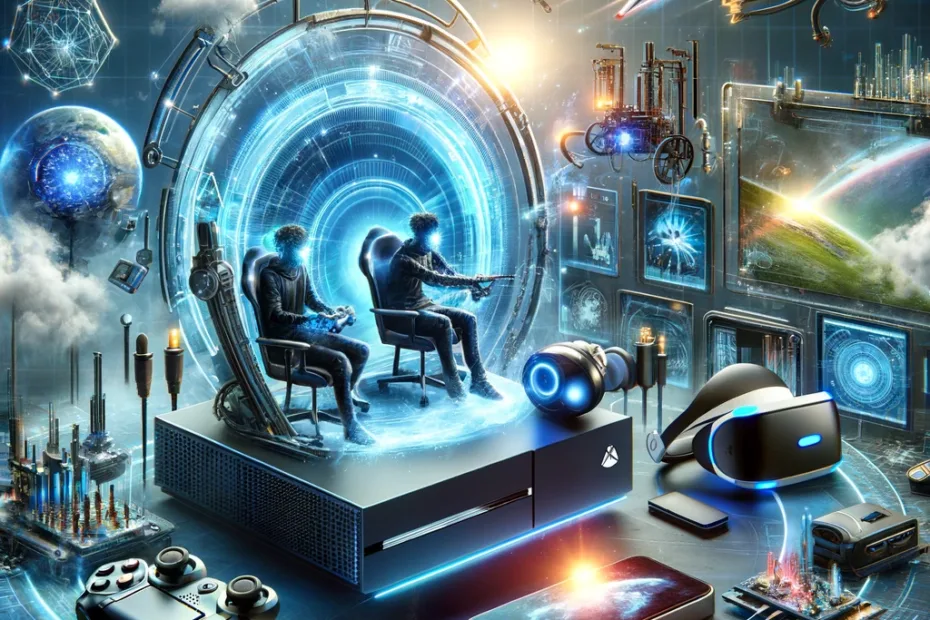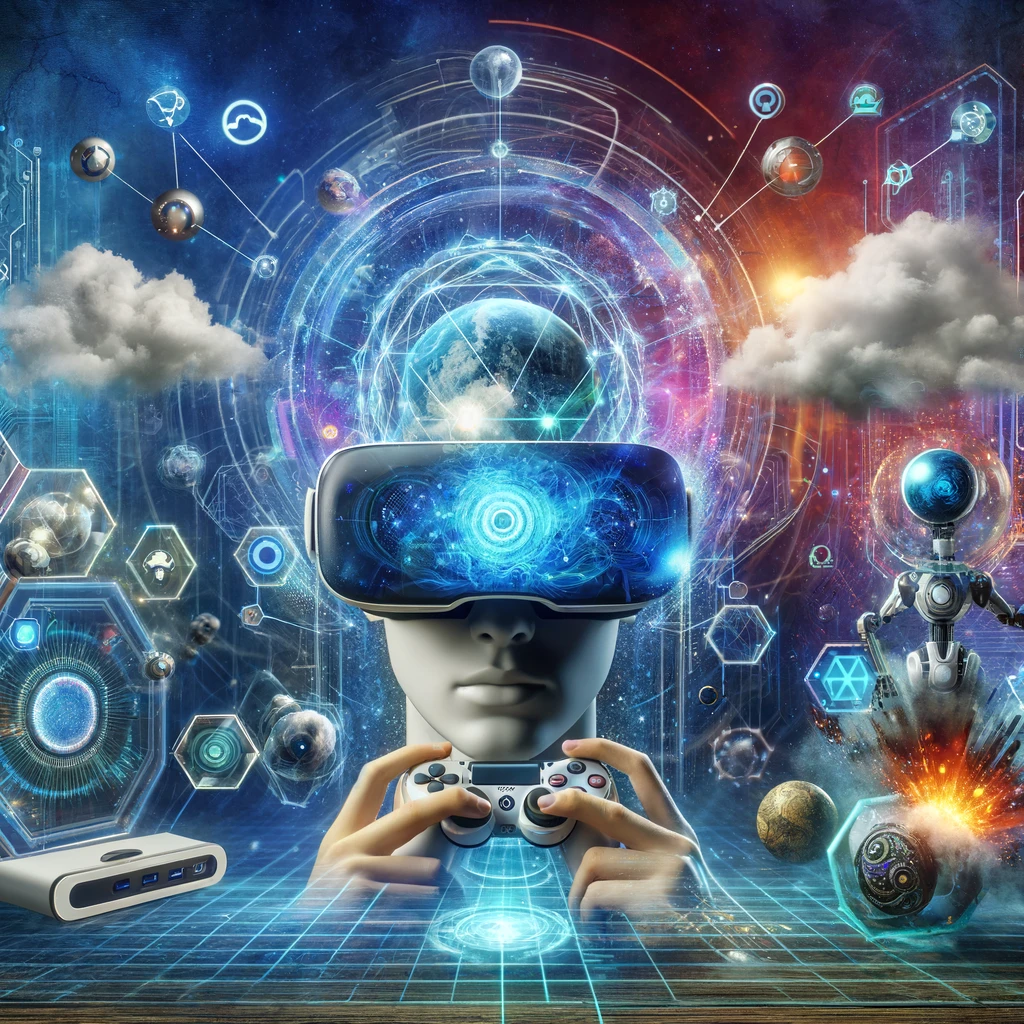Introduction to the Fusion of New Tech and Gaming
The gaming industry stands at the forefront of technological innovation, continuously pushing the boundaries of what’s possible within digital entertainment. The fusion of new technologies with gaming is not just transforming the way games are played and experienced but also redefining the very fabric of interactive entertainment. From virtual landscapes that defy the limits of our physical world to AI-driven narratives that adapt to each player’s journey, the synergy between new tech and gaming is crafting experiences that were once the realm of science fiction. As we explore the cutting-edge technologies shaping the gaming industry, we embark on a journey through virtual realms that promise to captivate our senses and challenge our perceptions of reality and virtuality.

Virtual Reality (VR) and Augmented Reality (AR) in Gaming
The realms of Virtual Reality (VR) and Augmented Reality (AR) have ushered in a new era of gaming, marked by an unprecedented level of immersion and interactivity. VR gaming, with its fully immersive environments, allows players to step into game worlds as if they were truly there, with technologies like 360-degree visuals, 3D audio, and motion-tracking controllers enabling a whole new level of presence and engagement. On the other hand, AR gaming blends the digital and the real, overlaying virtual elements onto our physical surroundings, thereby transforming everyday spaces into stages for gaming adventures. Titles like “Half-Life: Alyx” have showcased the potential of VR for deep, narrative-driven experiences, while games like “Pokémon GO” have demonstrated AR’s ability to bring gaming into the public sphere, creating communal and widely accessible experiences.

Cloud Gaming and Game Streaming Services
The advent of cloud gaming and game streaming services has marked a pivotal shift in the gaming landscape, promising to democratize access to high-quality gaming experiences. By offloading the processing power required to run high-end games to remote servers, cloud gaming platforms like Google Stadia, NVIDIA GeForce Now, and Microsoft’s Xbox Cloud Gaming allow gamers to enjoy demanding titles on less powerful devices, including smartphones, tablets, and aging PCs. This technology not only breaks down the hardware barriers traditionally associated with gaming but also offers new possibilities in terms of instant game access, seamless cross-platform play, and game portability. As internet infrastructure continues to improve and cloud technologies advance, the potential for cloud gaming to reshape the industry grows ever more significant.

Artificial Intelligence (AI) in Game Development and Gameplay
Artificial Intelligence (AI) is revolutionizing game development and gameplay, offering more dynamic, responsive, and personalized gaming experiences. In game development, AI algorithms assist in creating more realistic and complex environments, character behaviors, and even in procedural content generation, where entire game worlds can be autonomously created by AI. In terms of gameplay, AI is used to power non-player characters (NPCs) with behaviors that adapt to player actions, making games more challenging and unpredictable. Moreover, AI is facilitating personalized gaming experiences, tailoring game difficulty, narratives, and even in-game assistance to individual player preferences and skills, thereby enhancing engagement and satisfaction.

Wearable Gaming Tech and Biometrics
The integration of wearable gaming technology and biometrics into gaming is pushing the boundaries of immersion and player interaction. Devices such as haptic feedback suits and VR gloves provide tactile sensations that mirror in-game actions and events, from the rush of wind to the impact of a virtual bullet. Biometric sensors, on the other hand, can adjust game experiences in real-time based on physiological data, such as heart rate or facial expressions, offering a new layer of immersion and personalization. These technologies not only enhance the sensory experience of gaming but also open up new avenues for game design that can respond to the physical and emotional state of the player.

The Rise of Esports and Interactive Spectatorship
Esports has transformed from a niche hobby to a global phenomenon, with competitive gaming becoming a significant sector of the entertainment industry. New technologies are at the heart of this transformation, enhancing not just the way games are played but also how they are watched. Innovations in live streaming, interactive platforms, and virtual reality allow fans to experience esports in new, immersive ways, from choosing camera angles to interacting with live game data. These advancements have turned esports into a spectator sport that rivals traditional sports, complete with its stars, leagues, and millions of dedicated fans worldwide.

Challenges and Ethical Considerations
As gaming technology advances, it brings challenges and ethical considerations. Issues such as data privacy, digital wellbeing, and the ethical implications of AI and biometrics in gaming are increasingly coming to the fore. Balancing innovation with responsibility, ensuring equitable access to gaming technology, and safeguarding player welfare are crucial areas that industry stakeholders must address to ensure the sustainable and ethical growth of gaming.

In concluding our journey through “New Tech and Gaming,” we’ve traversed the landscape of current innovations transforming the gaming experience. From the immersive depths of VR and AR to the boundless potential of cloud gaming, the personalized experiences offered by AI, the physical connectivity of wearable tech, and the community-driven world of esports, gaming stands on the brink of a new era. As technology continues to evolve, so too will the ways we play, create, and connect within these digital realms, promising a future of gaming that is more immersive, inclusive, and interconnected than ever before.


